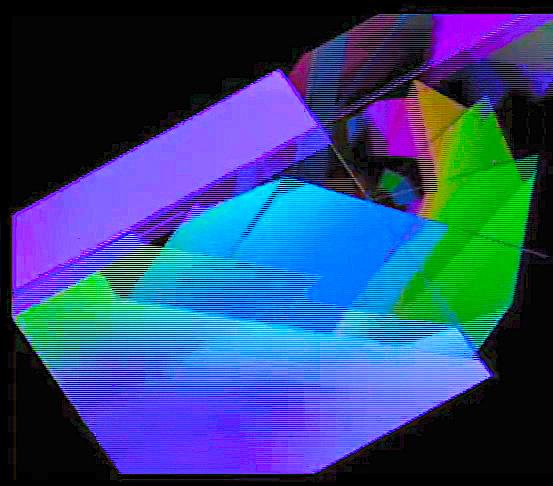Review: Lerner, New Upstream Ensemble mesmerize
By STEPHEN PEDERSEN Arts Reporter
Sun. Jan 13 - 6:33 AM
Toronto jazz pianist Marilyn Lerner mesmerized Upstream Music Association fans and JazzEast fellow travellers in the Sir James Dunn Theatre Friday night as she and the New Upstream Ensemble sorted their way through a dozen new charts written specially for the concert.
The Ensemble consists of Rick Waychesko (trumpet), Jeff Reilly (bass clarinet), Paul Cram (tenor sax/clarinet), Dawn Hatfield (baritone/alto saxes and flute), Lee Park (violin), Lukas Pearse (contrabass and electric bass), Jeff Torbert (guitar) and David Burton (drums).
As the featured soloist, Lerner displayed an instinctively swinging style that infused itself into whatever textures and free-wheeling musical territories she led herself into and was led into by five composers, four of them members of the Ensemble.
To maintain a jazz feel while scraping the strings inside the piano or running two-handed clusters up the keyboard with the ease of passing clouds troubling the sunlight takes some musical doing.
Lerner’s taste, discrimination, spontaneous choices of what to play and where to play it made her contribution particularly listenable.
She served mostly as a sideperson on the first half of the program, except for bass clarinetist and veteran Upstreamer Jeff Reilly’s Internal Combustion, which featured her as soloist in an extraordinarily clever and tightly written mini-piano concerto.
Reilly conducted the ensemble in his piece with fearsome energy, throwing cues at them like a beserker karate black-belt attacking a lumber pile with his fingertips.
The loud, violent accents that the sevenfold ensemble fired back at him failed to flap Lerner, who rode them as gracefully as a mogul champ on a particularly pockmarked hill.
The second half was all Lerner. She conducted her Ding an Sich suite and also played in it.
It began with The Isakower Phenomenon, named for a concept derived from her other life as a psychotherapist, which attempts to describe what happens when you fall asleep.
Lerner’s program note explains the idea that you can "experience perceptions of enlargement, altered states of consciousness, sensations of floating and impressions of the emergence and disappearance of an oral mass."
Wow.
Over a lugubrious, chorale-like texture, solos and duets went around the circle, pairing amplified electric violin (Park) and acoustic double bass (Pearse), clarinet (Cram) and bass clarinet (Reilly) and the like.
Within the cloud of musical unknowing that emerged, there was clarity and definition.
Witwork, named after the Freudian idea of how repressed ideas emerge in the form of jokes and slips of the tongue, was supported by a steady flow of crisp short notes from percussionist Dave Burton in trochaic (DUM-tee) rhythm, which tested the ensemble’s mastery of lightness and quick responses — not really one of the New Upstream Ensemble’s strong points.
Lerner played a fluent solo piece (Figure and Ground) that was both self-explanatory and absorbingly interesting.
The Present Moment followed after an intro of Lerner scraping the piano strings and damping them into a resonant thud with a one finger on the string and another striking the key, which was also intriguing to hear.
Her final piece, The Beethoven Free Association, required the players to play from previously unseen pages of Beethoven sonatas, which, as a concept, somewhat eluded most of the Upstreamers.
I suspect it requires a classical/jazz background such as Lerner has to realize its wit and irony. In any case, as an idea for an improv it worked well enough, albeit somewhat superficially.
The concert opened with Paul Cram’s Revolution, a well-written, well-conceived toccata-like piece, somewhat raggedly performed.
Young Dalhousie composer Zachary Fairbrother contributed a very well-designed piece he called Cells 1 which, following an explosive cluster at the start, settled down into carefully balanced, well-established textures, some of which were played against a steady hip-hop beat from Burton.
Saxophonist Hatfield’s Epistle for Eli was a re-orchestrated transcription of a quartet she wrote for flute, oboe, cello and piano that did not translate well in the Upstream context. It seemed self-conscious and shapeless, but it was hard to tell why.
Bassist Pearse contributed a well-developed piece called Dissociation 2008 which was consistent, well-organized, full of musical event, personal and entirely original.
On the whole, the New Upstream Orchestra sounded under-rehearsed for some of these pieces. The improvised sections worked well enough, but the written-out bits often sounded ragged, and not infrequently out of tune.
The decision to amplify the sound puzzled me. The acoustic environment of the Dunn hardly needs reinforcement. Amplfication can contribute to a ragged-sounding ensemble, because what comes out of the speakers is only a grainy photograph of the sound and the efforts of the musicians to blend and balance, which is the skilful part of ensemble playing, is significantly compromised. ( [email protected])
—
posted




